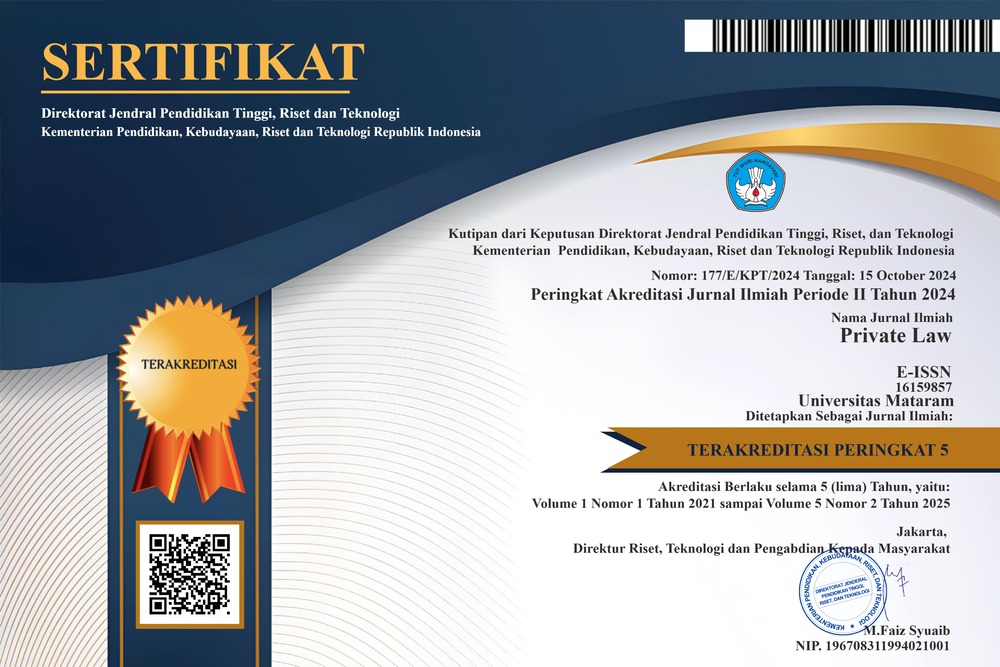Pelaksanaan Pendaftaran Hak Atas Tanah Secara Sporadik Berdasarkan Pipil Sebagai Bukti
(Studi Di Kantor Badan Pertanahan Nasional Lombok Timur)
DOI:
https://doi.org/10.29303/prlw.v3i1.2206Keywords:
Pendaftaran, Hak Atas Tanah, Pipil, BuktiAbstract
The aims of this research are to examine the implementation of land rights sporadically upon Pipil as evident and to determine whether Pipil has been legally admitted as adequate evidence in the sporadic land registration. The applied research method is the empirical legal research method. Research reports indicate that the implementation of land rights registration using Pipil as evidence is meant to provide legal certainty as long as it includes the owner’s identity, latest tax payment receipt and family card (KK) in a bundle to proceed to a notary of the land office. In the next stage, these documents will be checked and validated by the Head of the village, and lastly registered to the National Land Office (BPN).












